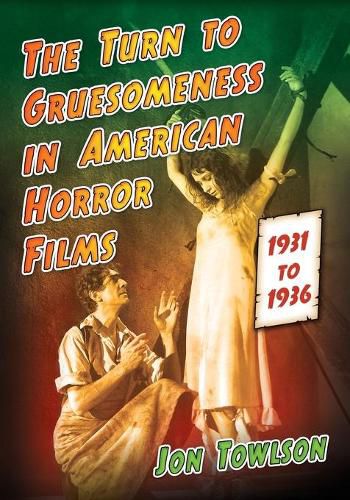Readings Newsletter
Become a Readings Member to make your shopping experience even easier.
Sign in or sign up for free!
You’re not far away from qualifying for FREE standard shipping within Australia
You’ve qualified for FREE standard shipping within Australia
The cart is loading…






This title is printed to order. This book may have been self-published. If so, we cannot guarantee the quality of the content. In the main most books will have gone through the editing process however some may not. We therefore suggest that you be aware of this before ordering this book. If in doubt check either the author or publisher’s details as we are unable to accept any returns unless they are faulty. Please contact us if you have any questions.
Critics have traditionally characterized classic horror by its use of shadow and suggestion. Yet the graphic nature of early 1930s films only came to light in the home video/DVD era. Along with gangster movies and
sex pictures,
horror films drew audiences during the Great Depression with sensational screen content. Exploiting a loophole in the Hays Code, which made no provision for on-screen
gruesomeness,
studios produced remarkably explicit films that were recut when the Code was more rigidly enforced from 1934. This lead to a modern misperception that classic horror was intended to be safe and reassuring to audiences. Taking a fresh look at the genre from 1931 through 1936, this critical study examines
happy ending
horror in relation to industry practices and censorship. Early works like Murders in the Rue Morgue (1932) The Raven (1935) may be more akin to The Texas Chain Saw Massacre (2003) and Saw (2004) than many critics believe.
$9.00 standard shipping within Australia
FREE standard shipping within Australia for orders over $100.00
Express & International shipping calculated at checkout
This title is printed to order. This book may have been self-published. If so, we cannot guarantee the quality of the content. In the main most books will have gone through the editing process however some may not. We therefore suggest that you be aware of this before ordering this book. If in doubt check either the author or publisher’s details as we are unable to accept any returns unless they are faulty. Please contact us if you have any questions.
Critics have traditionally characterized classic horror by its use of shadow and suggestion. Yet the graphic nature of early 1930s films only came to light in the home video/DVD era. Along with gangster movies and
sex pictures,
horror films drew audiences during the Great Depression with sensational screen content. Exploiting a loophole in the Hays Code, which made no provision for on-screen
gruesomeness,
studios produced remarkably explicit films that were recut when the Code was more rigidly enforced from 1934. This lead to a modern misperception that classic horror was intended to be safe and reassuring to audiences. Taking a fresh look at the genre from 1931 through 1936, this critical study examines
happy ending
horror in relation to industry practices and censorship. Early works like Murders in the Rue Morgue (1932) The Raven (1935) may be more akin to The Texas Chain Saw Massacre (2003) and Saw (2004) than many critics believe.